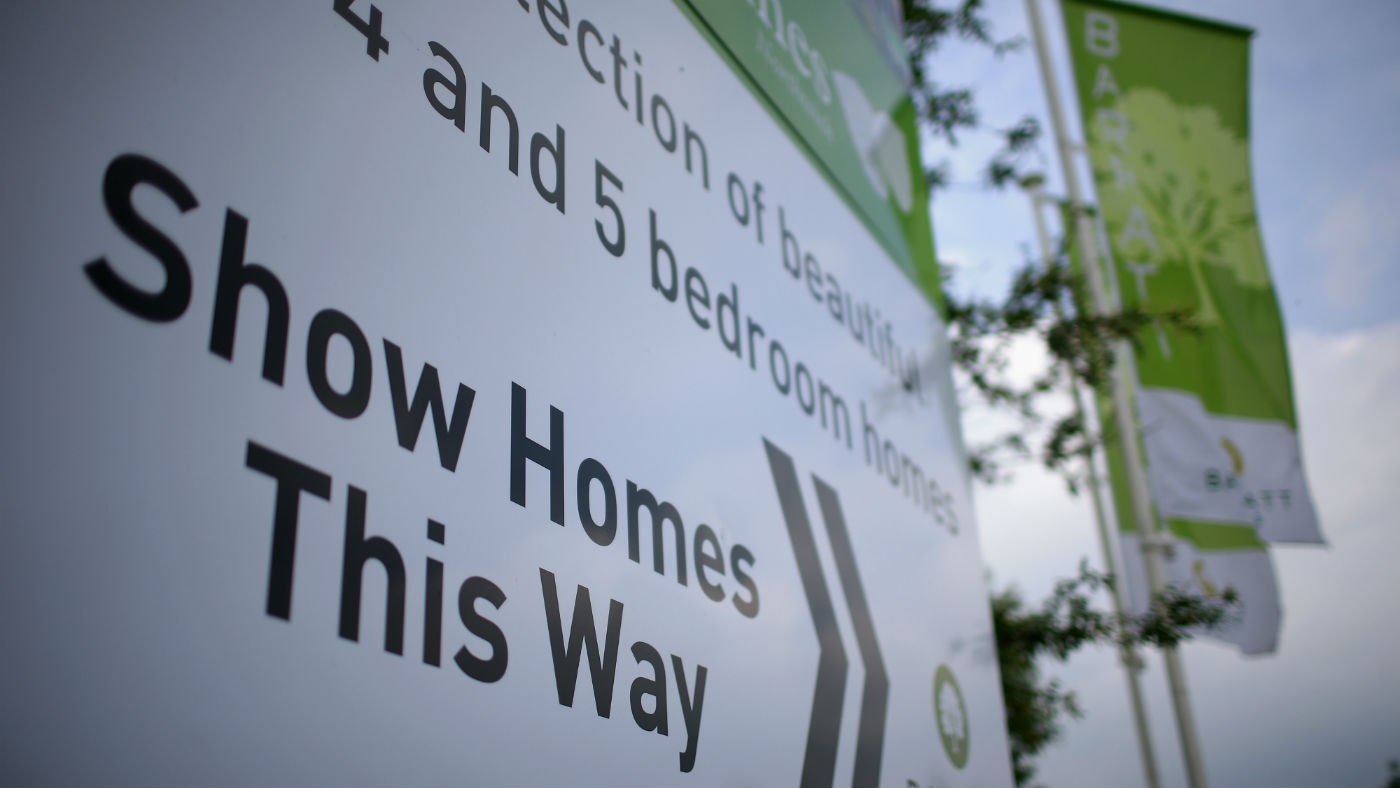Why doesn't Britain build enough homes?
Targets are being set, but no one is convinced they'll be met

Britain doesn't build enough houses.
That's not a new revelation: in 2005, the Barker Review into housing supply found the UK needed to build 250,000 homes a year to keep up with demand, a figure not reached since the mid-1970s.
Last year in England, 162,880 new homes were started and 147,960 completed - more than at any time in the last decade, says the BBC.
The Week
Escape your echo chamber. Get the facts behind the news, plus analysis from multiple perspectives.

Sign up for The Week's Free Newsletters
From our morning news briefing to a weekly Good News Newsletter, get the best of The Week delivered directly to your inbox.
From our morning news briefing to a weekly Good News Newsletter, get the best of The Week delivered directly to your inbox.
Governments throughout those years have continued to set building targets of more than 200,000 houses a year, while the Tories at this June's election pledged to build 300,000 a year to 2022.
However, almost nobody seems convinced these figures will buck the longer-term trend and actually be hit.
The direct consequence of this is ever-rising house prices, which are near record levels despite strong economic headwinds and predicted to rise further this year.
Here we discuss two big umbrella issues most commonly cited - and suggest some ways to fix them.
A free daily email with the biggest news stories of the day – and the best features from TheWeek.com
Shortage of land
"Land is the main long-term constraint, agree both the private sector Home Builders' Federation (HBF) and the National Housing Federation (NHF), which represents housing associations," says the BBC.
That Britain is a densely populated country has long been argued and was one of the main Brexit arguments against immigration.
However, in 2015, The Conversation cited figures showing the country is actually only fourth in Europe behind Belgium, the Netherlands and even Malta.
Moreover, according to a Financial Times data analysis from last October, only between ten to 15 per cent of the country is developed for homes.
Obviously we have a lot of necessary greenspace, including for farming, to take account of, but the figures suggest there is not as much of a shortage of land as you might think.
The bigger problem is finding land where there are jobs in massively built-up areas such as London, which are surrounded by protected "green belt" areas.
Added to that are swathes of land purchased by house builders but not developed, even where they have planning permission.
The NHF says the UK is half a million homes short of what is needed to meet demand, but The Guardian estimates that developers are sitting on land that could accommodate more than 600,000 homes.
The solution
One argument is to shift economic demand away from already overcrowded areas - Scotland, for example, is well below the European average population density - but that is a long-term concern.
In the meantime, freeing up land where it is wanted means getting brownfield land into use and also probably finding ways to build around areas such as London without eating up all Britain's greenspace.
Shelter recommends "green belt swaps", where protected areas that are built on are replaced with new green space elsewhere.
As for the developers, there is some debate over this, with housebuilders themselves saying there are issues in some cases to do with public infrastructure such as access roads and public services not being in place to complete developments.
An integrated plan with government working closely with local authorities to ensure infrastructure spending is directed where it is needed most could be an answer.
Planning delays
Housebuilders constantly cite planning delays for the lack of developing - a survey in 2015 found 95 per cent rightly said the target for housebuilding would be missed in 2016.
In response, the government says it has, through the National Planning Policy Framework, reduced the planning rulebook from thousands of pages to a mere 50 and that detailed planning permission rates surged to 261,000 homes last year.
The solution
Critics says part of the problem is that local authority budget cuts have left councils without the manpower to process the level of applications needed to keep up with targets.
Added to that is the localism inherent in the planning system, with the government making identifying land for building a council concern. This often leads to councils meeting stiff opposition to plans for new housing developments.
This could be alleviated by ensuring resources are made available to local authorities and that the process of finding places to build is streamlined.
-
 Turner Prize 2025: ‘artistic excellence’ or ‘cultural nonsense’?
Turner Prize 2025: ‘artistic excellence’ or ‘cultural nonsense’?Talking Point Work by the four artists nominated for this year’s award is on display at Bradford’s Cartwright Hall
-
 Man vs Baby: Rowan Atkinson stars in an accidental adoption comedy
Man vs Baby: Rowan Atkinson stars in an accidental adoption comedyTalking Point Sequel to Man vs Bee is ‘nauseatingly schmaltzy’
-
 Goodbye June: Kate Winslet’s directorial debut feels like a ‘John Lewis Christmas TV ad’
Goodbye June: Kate Winslet’s directorial debut feels like a ‘John Lewis Christmas TV ad’Talking Point Helen Mirren stars as the terminally ill English matriarch in this sentimental festive heartwarmer